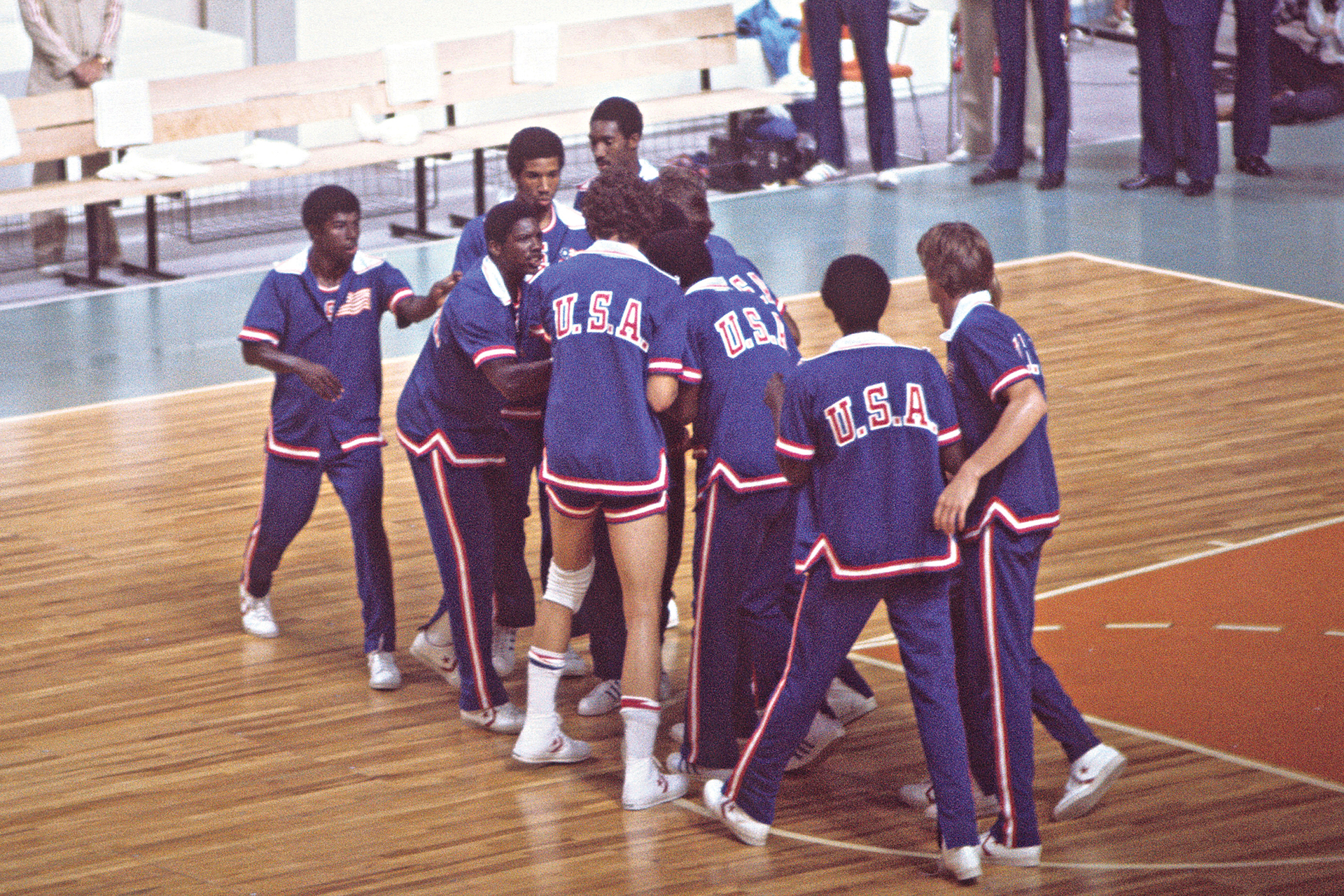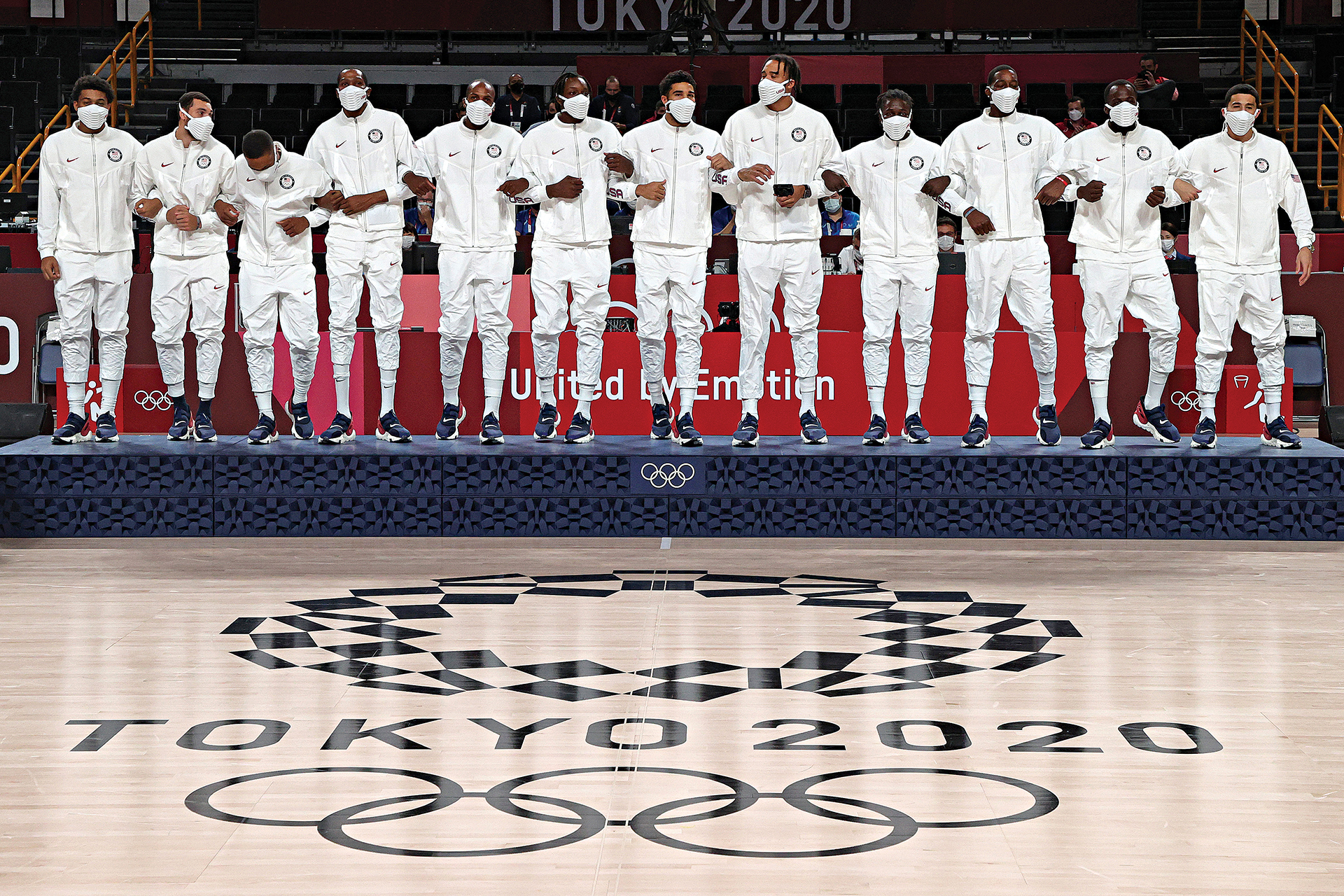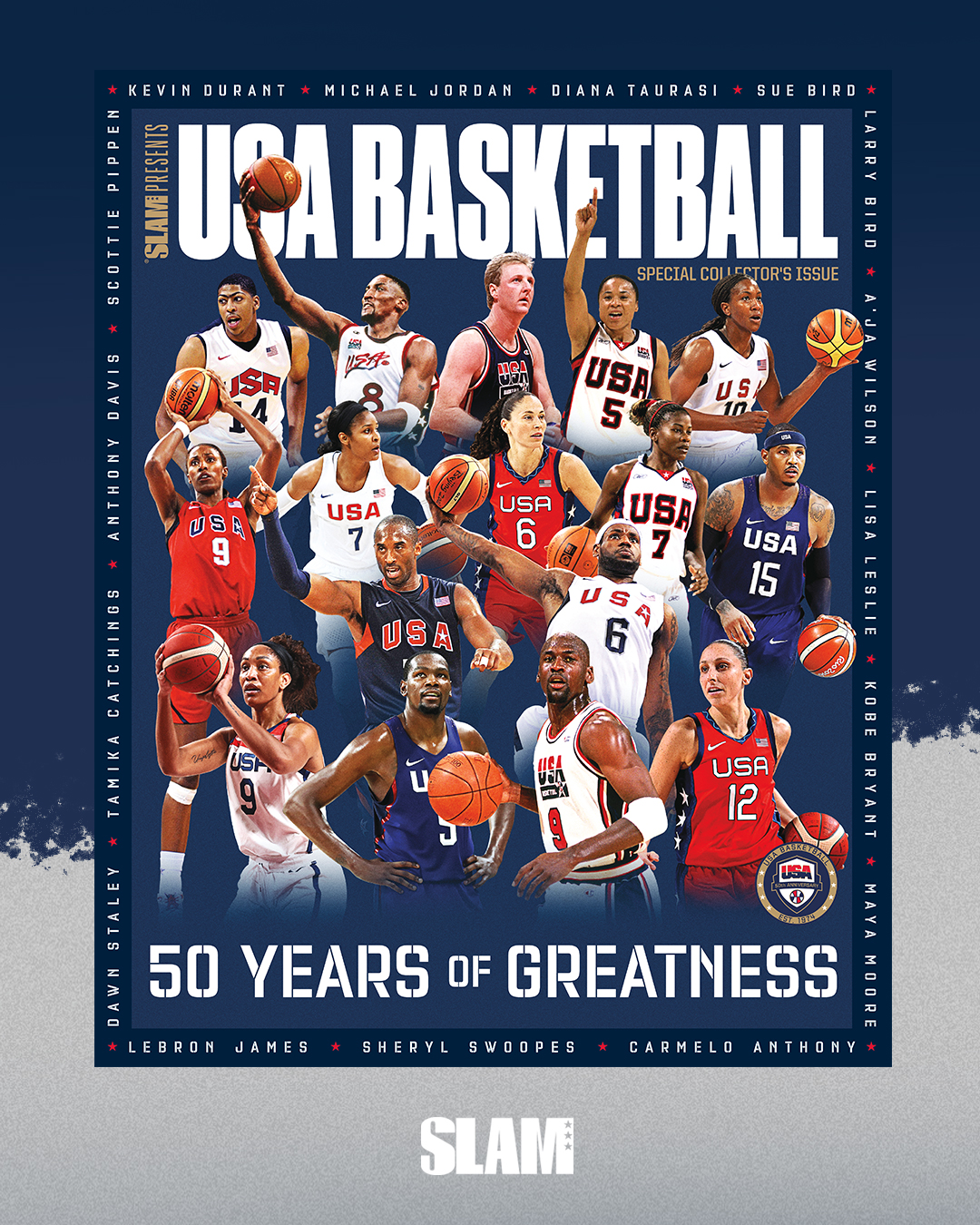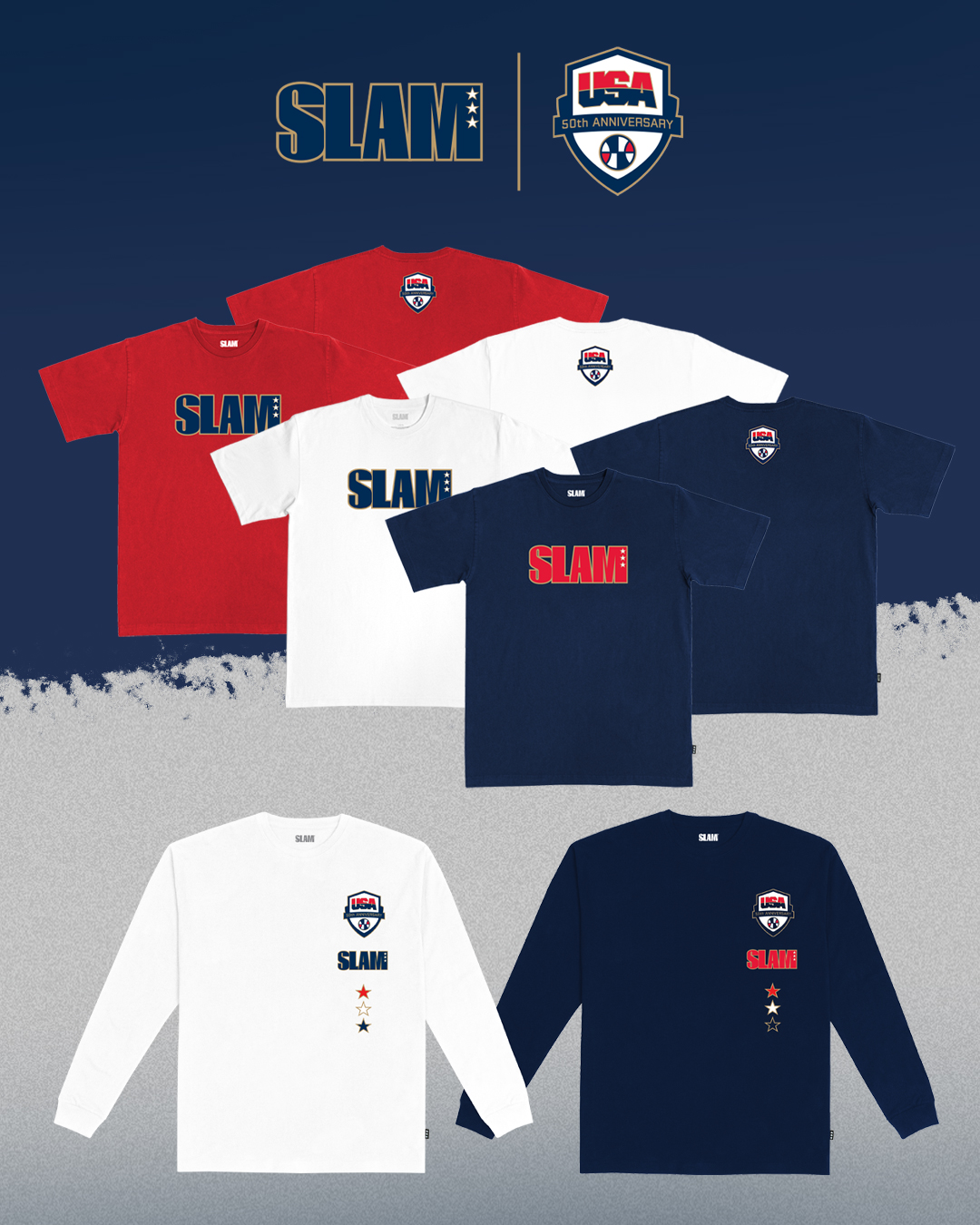This story appears in SLAM Presents USA Basketball. Shop now.
When the 1992 Olympic Dream Team used a ridiculous, 46-1 first-half run to turn its opening game against Angola into an emphatic statement of what was ahead for the rest of the world in Barcelona, it did more than just validate forward Charles Barkley’s prediction that Angola was “in trouble.”
It began a brand-new era for USA Basketball. After decades of sending the nation’s top collegians up against the world’s best, it was time to show everybody just how Dr. Naismith’s invention was meant to be played. From that point on, NBA stars populated teams that played in—and most of the time won—the biggest competitions.
But U.S. basketball domination didn’t start in ’92, and USA Basketball’s tradition isn’t just about the Dream Team. The country’s hoops governing body has created a legacy of success that has featured some of the game’s greatest players and most exciting results. The U.S. first stepped onto the international stage in 1936, when the sport was initially contested at the Olympics, and since that time it has been the world leader in the sport. As the nation’s governing body, USA Basketball has been the north star for the sport and has played a role in bringing basketball to America and the world. It has also provided an opportunity for U.S. fans to experience the game’s best playing together, as part of a vibrant red, white and blue tradition.
In 1974, the Amateur Basketball Federation of the United States of America (ABAUSA) was formed to bring all of the nation’s various organizations under the same governing body. Fifteen years later, the ABAUSA changed its name to USA Basketball, but its mission remained clear: provide the best possible support and leadership for U.S. teams to compete and win on the world’s biggest basketball stages, while also growing the game throughout the country. To say that it has been successful in that mission is a gigantic understatement.
Under USA Basketball’s leadership, the nation’s top players and coaches continue to dominate. The Men’s National Team has won nine of the last 11 Olympic Gold medals (the U.S. did not participate in the 1980 Moscow Games) and the last four. It has also captured four world championships over the last three-plus decades—in 1986, 1994, 2010 and 2014—and another in 1954. There have been numerous titles in competitions like the Pan Am Games and other tournaments worldwide. As the Paris Olympic Games approach, the U.S. is heavily favored to defend its Gold-medal status, thanks to a team of 12 NBA All-Stars that includes four MVPs and six NBA champions. It’s another example of the strong relationship between USA Basketball and the country’s greatest players, whose desire to represent their country is deep, and whose talent is overwhelming. Former NBA All-Star and 1996 Gold medalist Grant Hill, now USA Basketball’s Men’s Team Managing Director, selected the team and filled it with versatile standouts.
“The United States is home to some of the best basketball players in the world, and I appreciate the vast interest in being part of this roster,” Hill said. “These decisions weren’t easy, but it was a pleasure to go through the process and reach this outcome.”
EARLY DOMINANCE
More than 40 years after Naismith invented his game, the International Basketball Federation (originally known as FIBB) was born in 1932, and plans were made for the sport to be part of the 1936 Berlin Olympics. A field of 22 squads played, but it was really only about one team: the United States, which finished the competition 4-0 (there were no medal rounds) to claim the Gold.
Six straight Golds followed for the U.S., which was rarely challenged. The nation’s best collegians and recent graduates took on the world. Rival teams were often comprised of much older players, some of whom were paid—although no country would ever admit to it. It didn’t matter. From 1936-68, the U.S. went 55-0 in Olympic play, the type of dominance many expected from the country that invented the sport.
Among the standouts during that stretch were center Joe Fortenberry, who averaged 14.5 ppg in 1936, forward Clyde Lovellette (13.9 ppg) on the ’52 team, San Francisco big man Bill Russell (14.1 ppg) in 1956, 1960 standouts Oscar Robertson and Jerry Lucas, both of whom averaged 17.0 ppg, and Spencer Haywood, whose 16.1 ppg led the 1968 squad to Gold.
Haywood was the first college freshman ever invited to try out for the Olympic team, and the 19-year-old from tiny Trinidad State JC in Colorado proved he belonged. Not only did he score plenty—he had 21 in the Gold medal win over Yugoslavia—he also set an Olympic record for field-goal percentage (71.9) that still stands.
But Haywood, like so many of the great players who have represented the U.S. internationally, was part of a team. He could have scored even more, but he blended with other standouts to help continue a tradition that has defined USA Basketball: representing the United States.
For decades, the U.S. was the world’s supreme basketball powerhouse, but trouble was looming. The Soviet Union had invested heavily in its sports programs, with the goal of promoting Communism around the world. When Haywood stood on the podium and watched a giant American flag unfurl in the Mexico City arena, he could not have known the turbulence that lay ahead.

BIG CHANGES
The next 20-plus years were a time of great transformation for the nation’s top basketball organization. It all began in 1972, when the United States team suffered a crushing, 51-50 loss to the USSR in the Gold medal game in Munich. The contest featured enough confusion and controversy to fill an entire Olympiad. A U.S. protest was denied, and the American players refused to accept their Silver medals. It was the first Olympic loss in U.S. history, and it remains a dark chapter.
Two years later, the ABAUSA was created as a response to a decision by the international body (by then renamed FIBA) to revoke its recognition of the AAU, which had governed the sport in this country. The new organization brought together representatives from every amateur basketball confederation in the country and began its 50-year run of leading the nation’s basketball fortunes.
One of its first successes came in 1976 at the Montreal Olympiad, when the U.S. gained a measure of revenge for the ’72 debacle. The Americans rolled to a 7-0 record and the Gold medal. Although the final win came against Yugoslavia, which had upset the USSR in the semifinals, and not the Soviets, it was still a great first act on the largest international stage for America’s new governing body.
Since the U.S. didn’t participate in the 1980 Moscow Olympics, and the USSR boycotted the ’84 Games in Los Angeles, the two basketball superpowers didn’t meet again until 1988, in South Korea. The matchup didn’t take place in the final round, rather in the semis, and the U.S. was unable to overcome a loaded Soviet team that included future NBA standouts Arvydas Sabonis and Sarunas Marciulionis and fell, 82-76. Although the Americans won the Bronze by routing Australia, it was clear changes needed to be made, since the U.S. was using college players against teams with much older—and professional—competitors.
In April of 1989, FIBA made the historic decision to allow countries to use professional players on its international teams. Although the U.S. delegation voted against the change, the 56-13 decision was emphatic and created the opportunity for the U.S. to bring its best players to the world. Then-ABAUSA president Dave Gavitt declared the move necessary “in this new, worldwide era.” That October, the ABAUSA changed its name to USA Basketball.
FIBA had taken the big step. It was time for the United States to show basketball fans everywhere, from one side of the world to the other, what that meant.

STILL DREAMING
Barkley’s pre-Olympics prediction that Angola “was in trouble” could have applied to every opponent the Dream Team faced in 1992. The U.S. roster, comprised of 12 future Basketball Hall of Famers, blitzed to the Gold medal and won its eight games by a combined 43.8 ppg. Croatia’s 32-point defeat in the Gold medal game was the closest any rival came. Head coach Chuck Daly, who never called a timeout during the Olympics, put it well afterward.
“You will see a team of professionals in the Olympics again, but I don’t think you’ll see another team quite like this. This was a majestic team.”
Daly was right. There have been other teams filled with NBA stars that have brought Gold medals to the U.S. The ’96 version was nearly as dominant, winning its eight games by an average of 31.2 ppg. But the first squad, which included some of the best players to walk the planet (Michael Jordan, Magic Johnson, Larry Bird) and one of arguably the top five collegians of all time (Christian Laettner), remains the ultimate standard.
Yes, there was that hiccup in 2004 when the U.S. managed only a Bronze. But in every other Olympic competition since the Dream Team’s triumphant march onto the world’s court, the United States has been golden. The 2008 “Redeem Team” re-established the U.S. as the world’s best and began a run that American fans hope will continue this year in Paris.
Although the 2021 U.S. team dropped its first game to France, snapping its 25-game Olympic winning streak, it rebounded to roll into the Gold medal rematch with its group-stage nemesis. Thanks to 29 points from Kevin Durant, who averaged 20.7 for the tournament, the U.S. avenged its earlier loss and brought home a fourth-straight Gold medal, 87-82, over France.
The tough road demonstrated how USA Basketball had helped spread the game across the planet. When Jordan, Magic and Bird formed the Dream Team and overwhelmed all comers in ’92, the sport of basketball was still germinating worldwide. Over the next 30 years, it has blossomed remarkably, with many different countries boasting the kind of talent capable of challenging the U.S. The game is now loved worldwide and its growth is encouraging, due in large part to USA Basketball’s ability to nurture it at home and export it around the globe.

THE FUTURE
The U.S. Olympic team may be the most visible part of the USA Basketball profile, but the organization promotes and grows the game at every level. That means sponsoring youth camps and clinics, coaching academies, regional and national tournaments and international teams that participate in a variety of competitions.
It’s not all about winning. USA Basketball is committed to player development, safety and good sportsmanship. The organization continues to make sure the game thrives at all levels, and while it is fun to root on the U.S. teams against the world, it is also important to make sure all who play the game do so in environments that feature everything necessary for success and enjoyment of the sport.
As the 2024 Men’s National Team prepares for Paris, they carry with them all the years of training and development USA Basketball has given them. The world will be watching. And that includes the young athletes of USA Basketball’s development and junior teams, who might one day be a part of history.
SLAM PRESENTS USA BASKETBALL IS AVAILABLE NOW


Photos via Getty Images.















